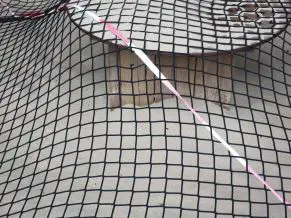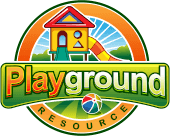A backyard sandbox may provide hours of entertainment for both children and adults, but it is critical to take care to protect everyone. A sandbox that is covered gives safety from bugs, animals, and other injuries that may arise when playing in the sand.
So, what are some of the options for covering your outdoor sandbox? Sandbox covers are available in a variety of shapes and sizes. Mesh sandbox covers, solid sandbox covers, personalized sandbox covers, and many other options are popular sandbox cover ideas. The dimensions of your sandbox and your own preferences will ultimately determine how you employ a sandbox cover.
This blog post will go over several cover ideas that you might want to consider while covering your outdoor sandbox. We’ll also discuss why it’s critical to protect your outdoor sandbox with a protective layer or cover.
By protecting your sandbox with cover, you protect yourself and your children from potential accidents or pest infestations in your backyard. Without a cover on top of the sandbox, children may fall into gaps between the boards, causing them harm.
It’s important to remember that youngsters aren’t the only ones who enjoy playing with sand. Insects and animals love to live in sandboxes and can be dangerous if allowed to make the sandbox their home.
As a result, covering your outdoor sandbox will keep these little pests from creeping into the sand and maybe harming your children while they play. Covering your sandbox is the greatest method to keep your children safe. In fact, it is the only quick and simple option to protect your children.
Let’s get started!
Table of Contents
Mesh Sandboxes
Sandbox mesh coverings are normally two layers thick, one mesh on top of the other. The top mesh is water-resistant while remaining breathable, allowing your sandbox to remain calm on hot summer days.
Mesh vinyl is likely the most popular alternative since it prevents water from pooling on its surface, producing a breeding ground for mosquitoes. This style of sandbox cover is also intended to keep pine branches, leaves, plants, and other natural detritus from getting into the sand.
It implies that your children can play while remaining protected. The following are some of the benefits of employing mesh covers:
- These are detachable and can be removed and stored when not in use.
- Mesh vinyl is simple to maintain and clean because its mesh top layer allows water to pass through.
- Based on the design of your sandbox, it can be adjusted to fit properly.
The following are some of the disadvantages of mesh covers:
- It may not shield your sandbox from harsh items such as chair corners.
- When in use, they are quite weighty and large, making them difficult to remove after playtime.

Solid Covers
Consider covers made of thick plastic if you want something more substantial. Wind gusts and other adverse weather conditions should be no match for these types of covers. Slats on the front of solid coverings allow children to look out into your garden while playing.
Among the benefits of utilizing this style of cover are:
- It is strong and will endure a long time.
- You may quickly remove it to interact with your children when they have finished their homework!
- They are also simple to clean because you can spray them down or simply shrug away the debris that accumulates on top.
The following are some disadvantages of adopting this style of cover:
- The low-quality variant cannot keep rainwater out of your sandbox.
- In the summer heat, they can get very hot, potentially burning children’s feet if they are not careful.
Collapsible Sandbox Covers
Consider collapsible sandbox coverings if you want something that is simple to store while not in use. You can quickly fold up these lighter pieces and store them for your sandbox during the off-season.
Collapsible sandbox covers are mostly composed of mesh vinyl, which makes them simple to maintain and clean among uses.
The following are some advantages of employing collapsible covers:
- They are quick and simple to stow away for the off-season.
- Slats in the front of collapsible coverings allow kids to view around outside in your backyard while playing.
- You may modify the top to fit your sandbox properly, regardless of its shape or size.
- They are simple to clean because you merely wash them down with a damp towel or hose them down entirely, depending on the material of the cover.
The disadvantage of utilizing this form of cover is that it is frequently not suited for usage in really high winds, especially if you reside in a windy area.
Customized Sandbox Cover Ideas
If none of the aforementioned solutions fit your needs, you may always make your own sandbox cover. It must be composed of mesh so that water doesn’t really pool on top and form a mosquito breeding place.
The color should generally be black or dark green, as these hues collect less the sun’s rays and do not become dirty easily.
Some advantages of utilizing a personalized cover include:
- Most home improvement stores and online vendors carry the material.
- Custom covers are frequently cheaper than pre-made ones, particularly more solid types like plastic, which typically feature slats on the front to allow children to look outside while playing.
- They will also allow water to flow underneath, preventing puddles from forming.
Some disadvantages of using a personalized cover include:
- Because your children will be playing with the sand in your backyard sandbox every day, it might be difficult to choose materials that are easy to clean and maintain. Stains may accumulate over time if the cover cannot be quickly hosed or wiped down.
- When not in use, custom covers can be quite heavy and bulky, making them difficult to remove.
- It does not offer as much protection against sharp objects such as chair corners or other objects that may poke holes in your mesh material.
The main reason you should protect your sandbox is to keep dirt out of the sand. If a sandbox is left uncovered, it’s going to get dirty over time, and kids may inadvertently consume some of that dirt when playing with their toys or eating snacks in there. Uncovered sandboxes can become unclean over time, potentially allowing kids to use dangerous substances such as bacteria or pollutants in the sand.
Because every yard is different based on how much area you have to play with and what type of sandbox you have, it is critical to select a cover for your sandbox that fits best with your family’s needs and tastes.

